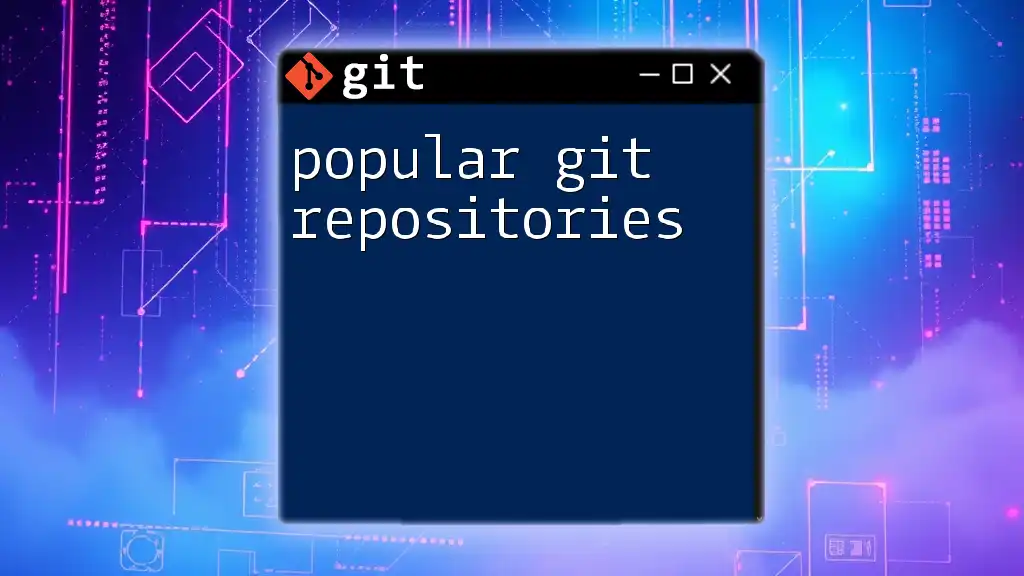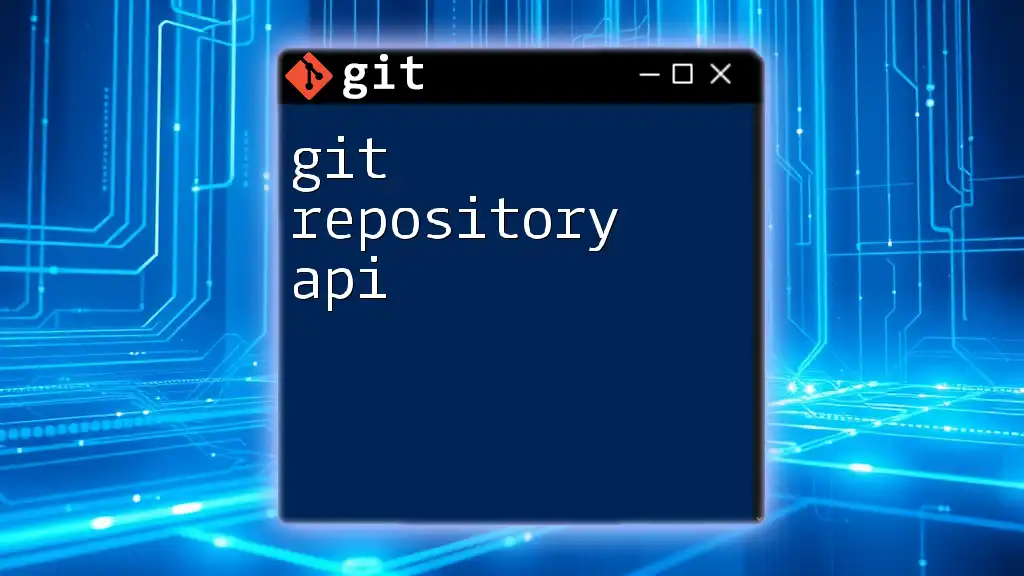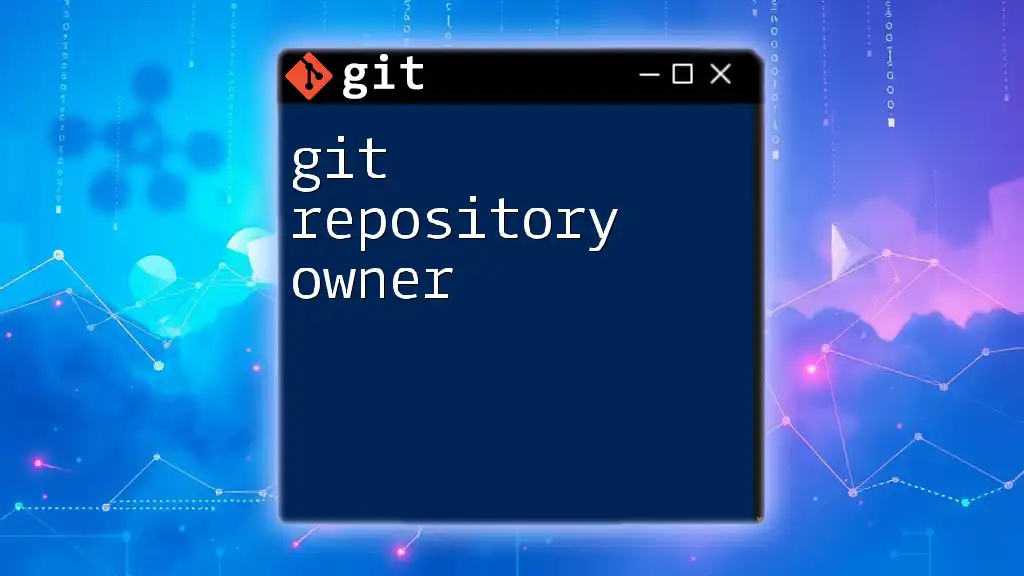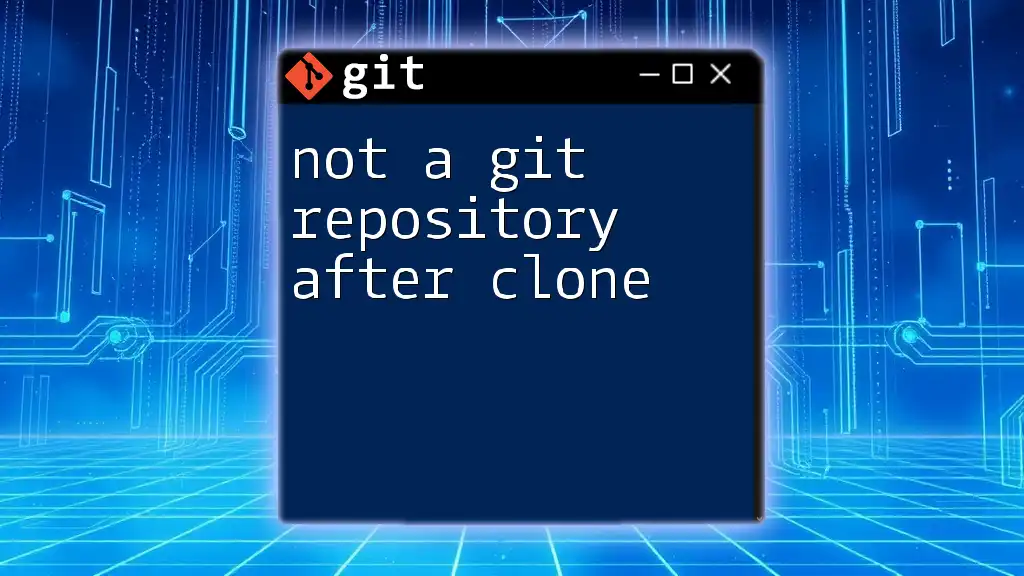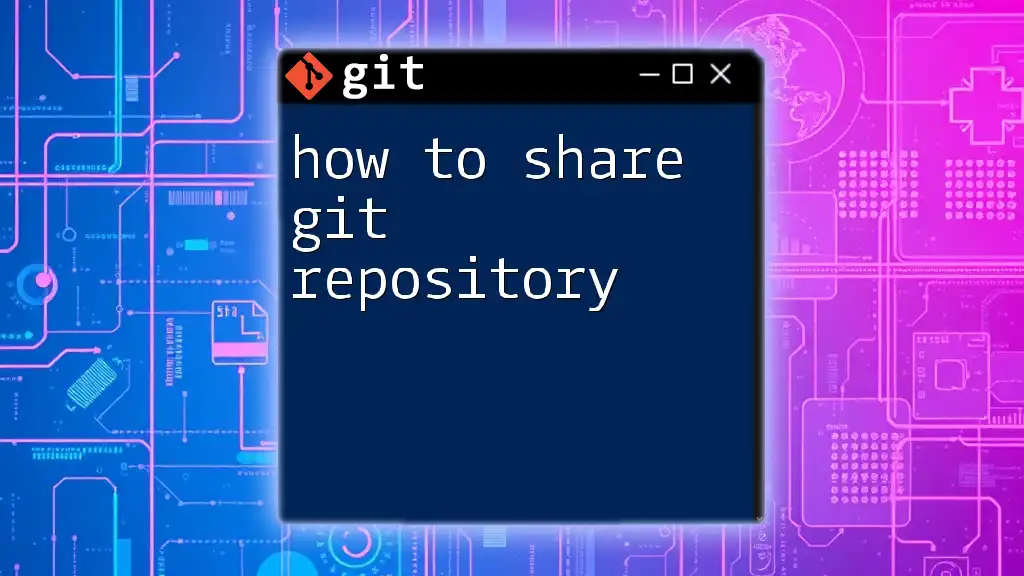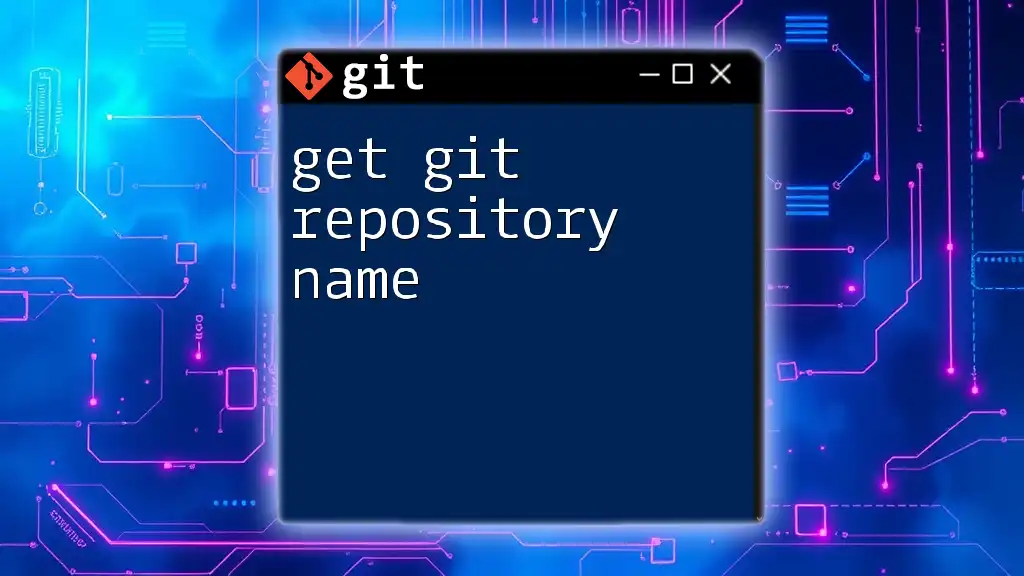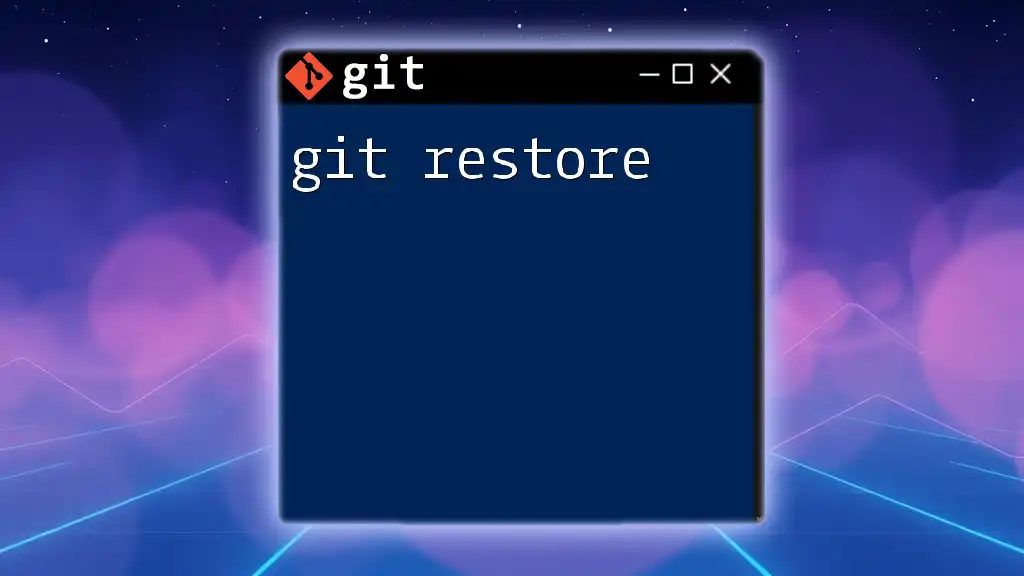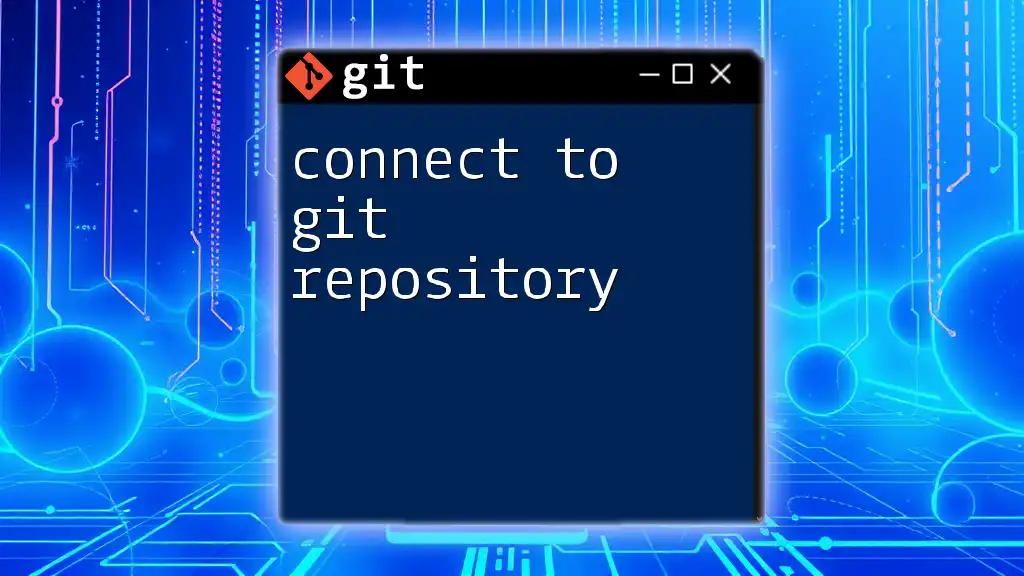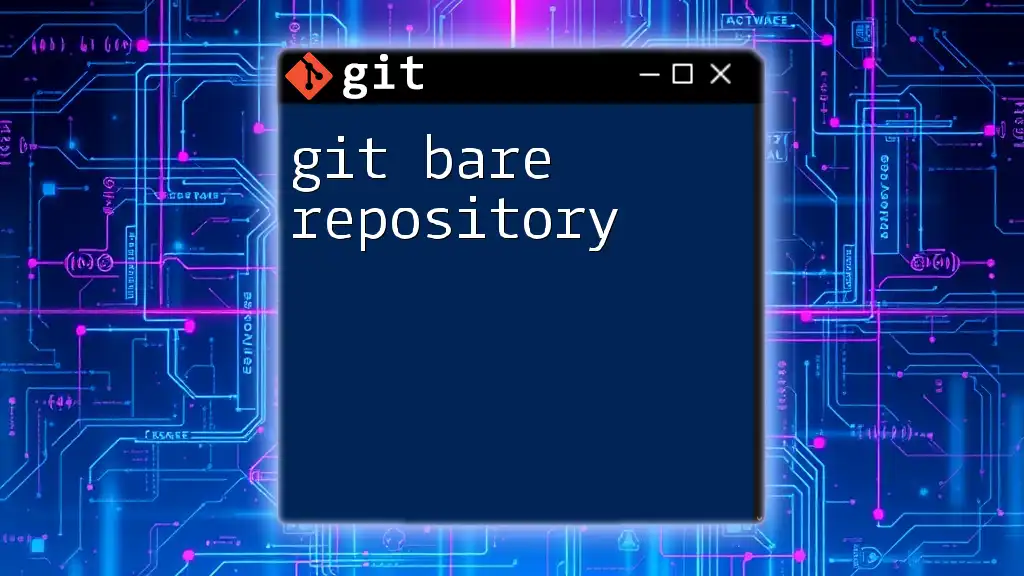Popular Git repositories are widely used codebases and projects on platforms like GitHub that serve as references or learning materials for developers, showcasing effective Git workflows and collaboration practices. Here's a Git command to clone a popular repository:
git clone https://github.com/username/repository-name.git
What is a Git Repository?
A Git repository is a storage space where your project files are kept in a structured way. In Git, two types of repositories exist: local and remote. A local repository resides on your machine, providing a full version control environment. In contrast, a remote repository is hosted on a server (like GitHub) and allows for collaboration among multiple users.
Key concepts in Git repositories include:
-
Commits: These are snapshots of your project at specific points in time. A commit keeps track of all changes made.
-
Branches: Branching allows you to diverge from the main line of development, creating a unique version of your project where you can safely make changes without affecting the main base.
-
Tags: Tags are used for marking specific points in history as important—often used for release versions.
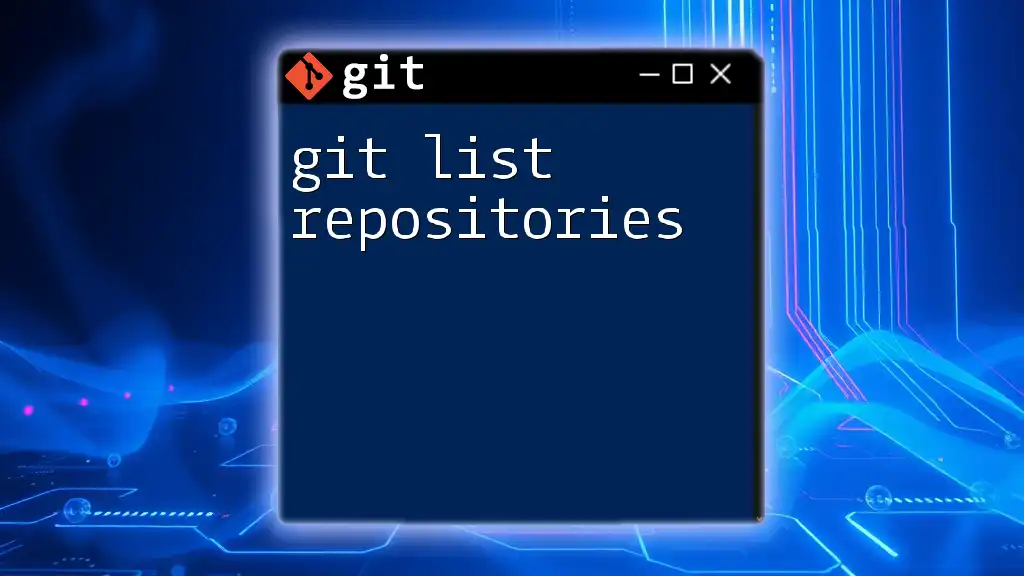
How to Discover Popular Git Repositories
GitHub is the most recognized platform for discovering popular Git repositories. It serves as the primary hub for open-source projects and provides a rich community of developers. You can easily start exploring repositories through the Explore feature on GitHub, where you can find trending projects based on various tags, languages, and topics.
GitLab and Bitbucket are useful alternatives to GitHub, each offering unique features catering to different needs. GitLab provides strong CI/CD capabilities within its repositories, while Bitbucket integrates smoothly with Atlassian products, which many teams already use.
Aside from popular platforms, other sources like Git repositories aggregators (e.g., Awesome Lists) and community suggestions on platforms such as Reddit and Stack Overflow can help you discover repositories worth exploring.
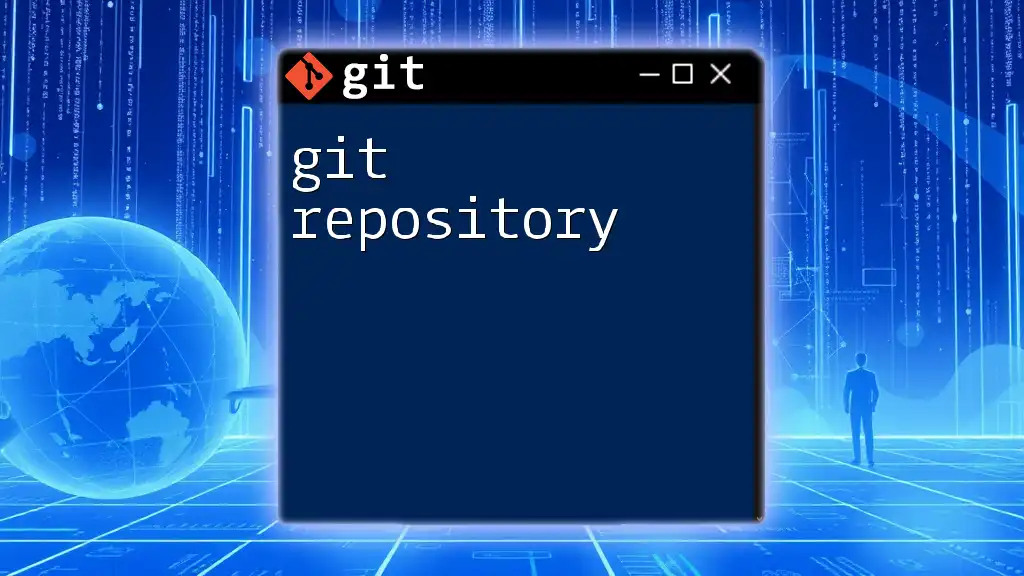
Characteristics of Popular Git Repositories
Well-Documented Projects
Documentation is crucial for any repository. A comprehensive README file is the first point of contact for users. It should clearly outline what the project does, how to install it, and how to contribute. Here’s how an effective README file might look in terms of structure:
- Project Title
- Description: Brief overview of the purpose
- Installation Instructions: Steps for setup
- Usage Examples: Code snippets demonstrating functionality
Example:
# Project Title
<InternalLink slug="delete-git-repository" title="Delete Git Repository: Quick Steps to Clean Up Your Projects" featuredImg="/images/posts/d/delete-git-repository.webp" />
## Description
_A brief explanation of your project._
<InternalLink slug="best-git-repository" title="Best Git Repository: Your Quick Command Guide" featuredImg="/images/posts/b/best-git-repository.webp" />
## Installation
```bash
git clone https://github.com/username/project
cd project
npm install
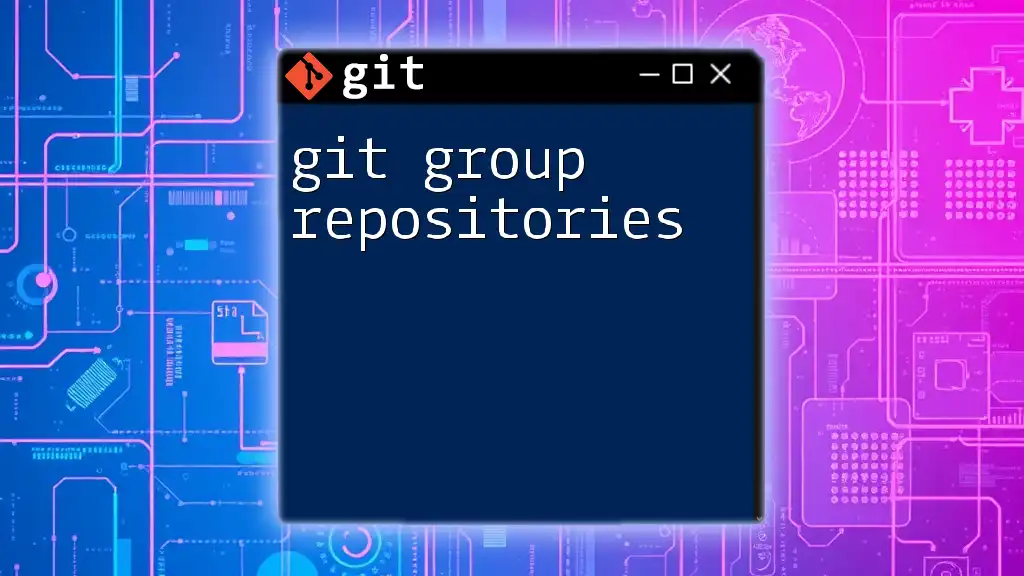
Usage
./run-your-project.sh
### Active Maintenance
Active maintenance shows a repository is healthy. You should look for indicators such as frequent commits, open pull requests, and recent issue resolutions. A well-maintained repository makes it easier for new developers to adopt it as they navigate through numerous active discussions and quick resolutions to issues.
### Community Engagement
A strong community is vital for the longevity of a Git repository. Popular repositories typically exhibit active discussions in issues, contributions from a variety of developers, and a welcoming approach to newcomers. Attributes of a collaborative repository include clear contribution guidelines and regular involvement from maintainers.
<InternalLink slug="view-git-repository" title="View Git Repository: A Quick Guide to Mastery" featuredImg="/images/posts/v/view-git-repository.webp" />
## Examples of Popular Git Repositories
### Linux Kernel
The **Linux Kernel** is iconic for its contribution to open-source software, with a mission to provide a free and open operating system. The repository is expansive, featuring numerous branches to support various device architectures.
Key aspects:
- It showcases thousands of contributors.
- Regular releases and updates are imperative, alongside discussions in a vibrant community focused on stability and performance.
### TensorFlow
**TensorFlow**, developed by Google, is a popular machine-learning library. Its repository has become a significant resource for developers interested in artificial intelligence (AI).
Noteworthy features:
- Comprehensive documentation and tutorials are provided.
- Example code snippets for training models can be found throughout the repository.
Example:
```python
import tensorflow as tf
# Define a simple sequential model
model = tf.keras.Sequential([
tf.keras.layers.Dense(10, activation='relu', input_shape=(None, 20)),
tf.keras.layers.Dense(1)
])
React
React is a JavaScript library for building user interfaces, primarily used for creating single-page applications. Its popularity stems from its modular approach, making UI components reusable.
Highlights:
- Strong documentation and an active community provide a solid knowledge base.
- Insight into upcoming features can often be found in the issues section, keeping developers informed on changes and improvements.
Example component creation:
import React from 'react';
// A simple functional component
const Greeting = ({ name }) => {
return <h1>Hello, {name}!</h1>;
};
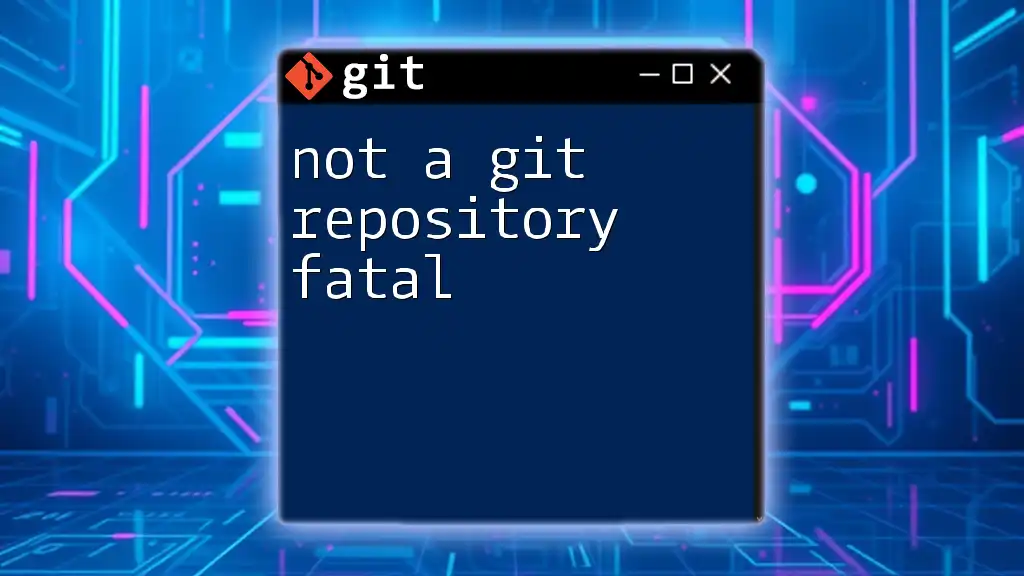
Insights from Popular Repositories
Learning from the Best: Code Quality
When delving into popular repositories, you’ll notice high code quality standards being enforced. These include rigorous code reviews, adherence to best practices, and a commitment to maintainability. Exploring these can greatly enhance your coding skills.
Project Management
Effective project management techniques are visible within many popular repositories. They often utilize issue tracking and project boards to organize tasks efficiently. Understanding workflows, such as Git Flow, can also help you streamline your contributions to various projects.
Licensing and Contribution Guidelines
Before diving in, understand the licensing structure of popular repositories. Licensing informs you of your rights regarding modification and distribution. The most common licenses include MIT, Apache, and GPL, each serving different purposes in the software ecosystem.
Having clear contribution guidelines is also crucial. They specify how to report issues, submit pull requests, and communicate with the community, fostering an environment of collaboration and respect.

How to Utilize Popular Git Repositories for Learning
Cloning and Experimenting
To learn from these repositories, start by cloning them onto your local machine. You can use the command:
git clone https://github.com/username/repo
This command copies the entire repository, allowing you to explore its contents. Familiarize yourself with essential Git commands like `git checkout` to switch between branches and `git pull` to update your local copy with the latest changes from the remote.
Reading and Understanding Code
Navigating large codebases can be daunting. Focus on understanding the architecture by following file structures and reading through the code to discern how various components interact. Utilize search features within your code editor or platforms like GitHub to find specific functions or modules.
Contributing to Open Source Projects
If you’re ready to contribute, ensure you follow the repository's contribution guidelines. Start by addressing open issues and submitting enhancements. Here’s a simple approach you can take:
- Check the issues page for items that need attention.
- If you identify a feature you can build or bug you can fix, fork the repository.
- Create a feature branch:
git checkout -b new-feature-branch - Implement your changes, commit them, and push the branch.
- Open a pull request and describe your changes clearly.
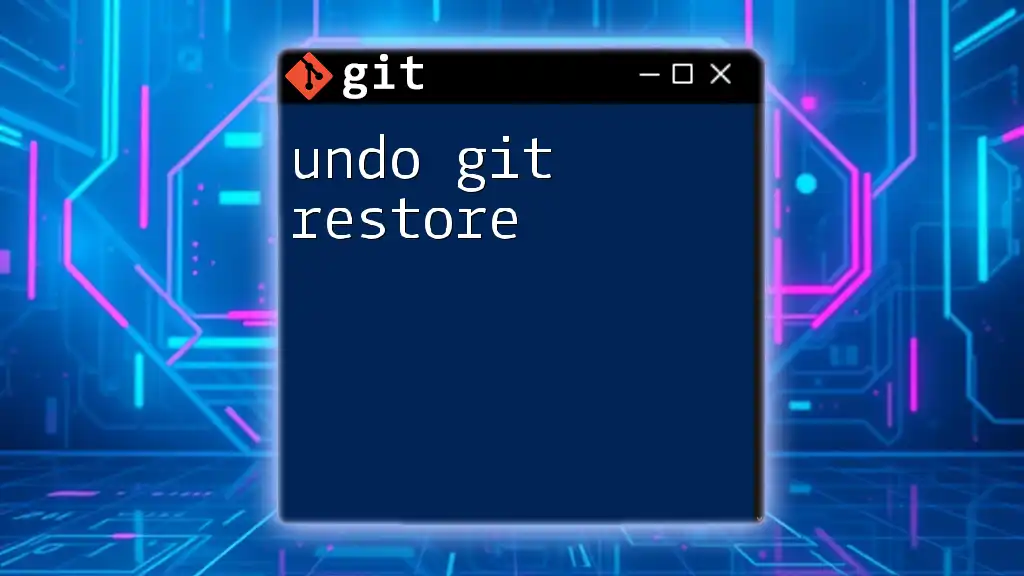
Conclusion
Exploring popular Git repositories is not just about utilizing existing code; it’s an opportunity to learn from established practices, understand project management, and engage with a vibrant community. By actively participating in these repositories, you can refine your skills, contribute to exciting projects, and grow as a developer. As you embark on your journey in the world of Git, immerse yourself in these resources and make the most of what the open-source community has to offer.
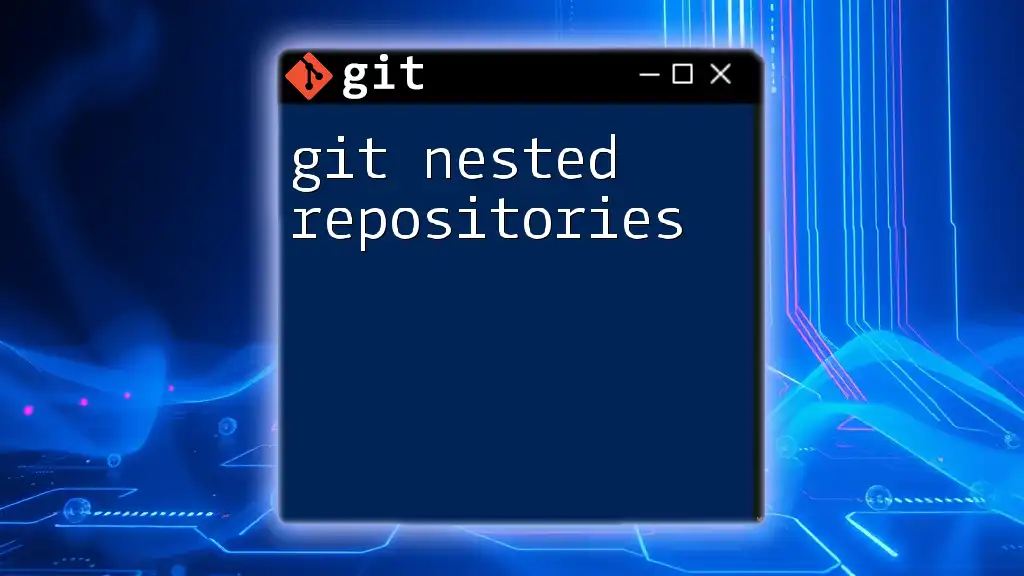
Additional Resources
For further exploration, consider checking out:
- Additional articles and blogs focused on advanced Git and version control practices.
- Online courses dedicated to mastering Git commands.
- Community forums and chat groups where you can seek help and share knowledge with fellow developers.

